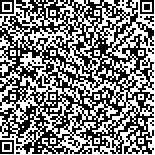| 本文已被:浏览 4296次 下载 5165次 |

码上扫一扫! |
| 汕头—台湾浅滩渔场中国枪乌贼形态学初步分析 |
| 刘梦娜,王雪辉,刘玉,邱永松,何映霖,贝伟烈,朱江峰,杜飞雁 |
|
|
| (上海海洋大学海洋科学学院,上海 201306;中国水产科学研究院南海水产研究所,广东 广州 510300;广东省渔业生态环境重点实验室,广东 广州 510300;中国科学院南海海洋研究所,广东 广州 510301;海南智渔可持续科技发展研究中心,海南 海口 570208) |
|
| 摘要: |
| 形态学研究是海洋生物学的基础,对了解渔业资源的群体组成有重要意义。根据2018年7月至2019年6月在汕头—台湾浅滩渔场采获的940尾中国枪乌贼(Uroteuthis chinensis)的形态学数据,对其群体组成、胴长与体质量关系进行了研究;对各形态参数比进行了主成分分析;采用线性、指数、幂函数、Logistic4种函数对各形态学指标即右第一至第四腕长、右触腕长、鳍长和鳍宽与胴长的关系进行了拟合并选出最优方程。结果发现:中国枪乌贼的胴长范围为50.00~300.00 mm,平均胴长为111.44 mm,体质量范围为7.43~301.00 g,平均体质量为53.95 g,雌、雄生长系数b值分别为2.269 6和2.067 5,雌性比雄性生长速度更快,并存在个体小型化持续的趋势。主成分分析表明各形态参数比的差异可简化为2个主成分,第1主成分主要解释了各腕长、鳍宽的差异;第2主成分主要解释了鳍长的差异,因子荷载可视化雌雄在第2主成分具有明显偏离态势。各腕指标及鳍长、鳍宽与胴长关系以线性函数拟合最佳,协方差分析表明雌性与雄性个体之间存在显著差异(p< 0.05 )。研究结果可为中国枪乌贼渔业生物学积累基础资料,加深对该资源种群组成及变动的了解,从而为实现资源的可持续利用和科学管理提供依据。 |
| 关键词: 海洋生物学 中国枪乌贼 形态学 曲线拟合 主成分分析 汕头—台湾浅滩渔场 |
| DOI:10.3969/J.ISSN.2095-4972.2021.02.004 |
|
| 基金项目:国家科技基础资源调查专项资助项目(2017FY201405);中国水产科学研究院基本科研业务费资助项目(2019HY JC0203) |
|
| Preliminary analysis of morphology of Uroteuthis chinensis in Shantou-Taiwan Strait Bank fishing ground |
| LIU Meng-na,WANG Xue-hui,LIU Yu,QIU Yong-song,HE Ying-lin,BEI Wei-lie,ZHU Jiang-feng,DU Fei-yan |
| (College of Marine Science, Shanghai Ocean University, Shanghai 201306, China;South China Sea Fisheries Research Institute, China Academy of Fishery Sciences, Guangzhou 510300, China; Guangdong Provincial Key Laboratory of Fishery Ecology and Environment, Guangzhou 510300, China;South China Sea Institute of Oceanology, Chinese Academy of Sciences, Guangzhou 510301, China;China Blue Sustainability Institute, Haikou 570208, China) |
| Abstract: |
| Morphological study is the basis of marine biology and is of great significance for understanding the composition of fishery stock. Using the morphological parameters of 940 Uroteuthis chinensis samples collected in Shantou-Taiwan Strait Bank fishing ground from July 2018 to June 2019, we studied the group composition and the relationship between mantle length (ML) and weight. Principal component analysis (PCA) was used to analyze the ratios among morphological parameters to determine the main components of the morphological differences. Besides, 4 functions, linear, exponential, power function and Logistic, were used to fit the curves of relationship between mantle length and other morphological parameters which contain four wrist length (AL1,AL2,AL3,AL4), touch wrist length (TL), fin length (FL) and fin width (FW), and the best-fitting function was selected and applied. The results show that the maximum, minimum and average mantle length of Uroteuthis chinensis are 50.00 mm, 300.00 mm and 111.44 mm, respectively. The mantle weight (MW) ranges from 7.43g and 301.00g with average of 53.95 g. And the growth coefficient b of females and males is 2.2696 and 2.067 5, respectively. Therefore, females grow faster than males while individual sizes trend toward miniaturization. PCA result showed that the difference of morphological parameter ratios can be optimized into two principal components. The first principal component mainly explains the differences of all of the wrist length and fin width between females and males. The second principal component mainly demonstrates the difference of fin length. And the second principal component has a more obvious manifestation in the factor visualization map. The best-fitting function of the relationship between mantle length and morphological parameters is of linear function. There are significant differences between females and males in the relationship between mantle length and morphological parameters. Thus, the results can provide more basic data for the fishery biology of Uroteuthis chinensis and more understanding about the composition and changes of the resource population for the sustainable use and scientific management of the stocks. |
| Key words: marine biology Uroteuthis chinensis morphology curve-fitting principal component analysis Shantou-Taiwan Strait Bank fishing ground |